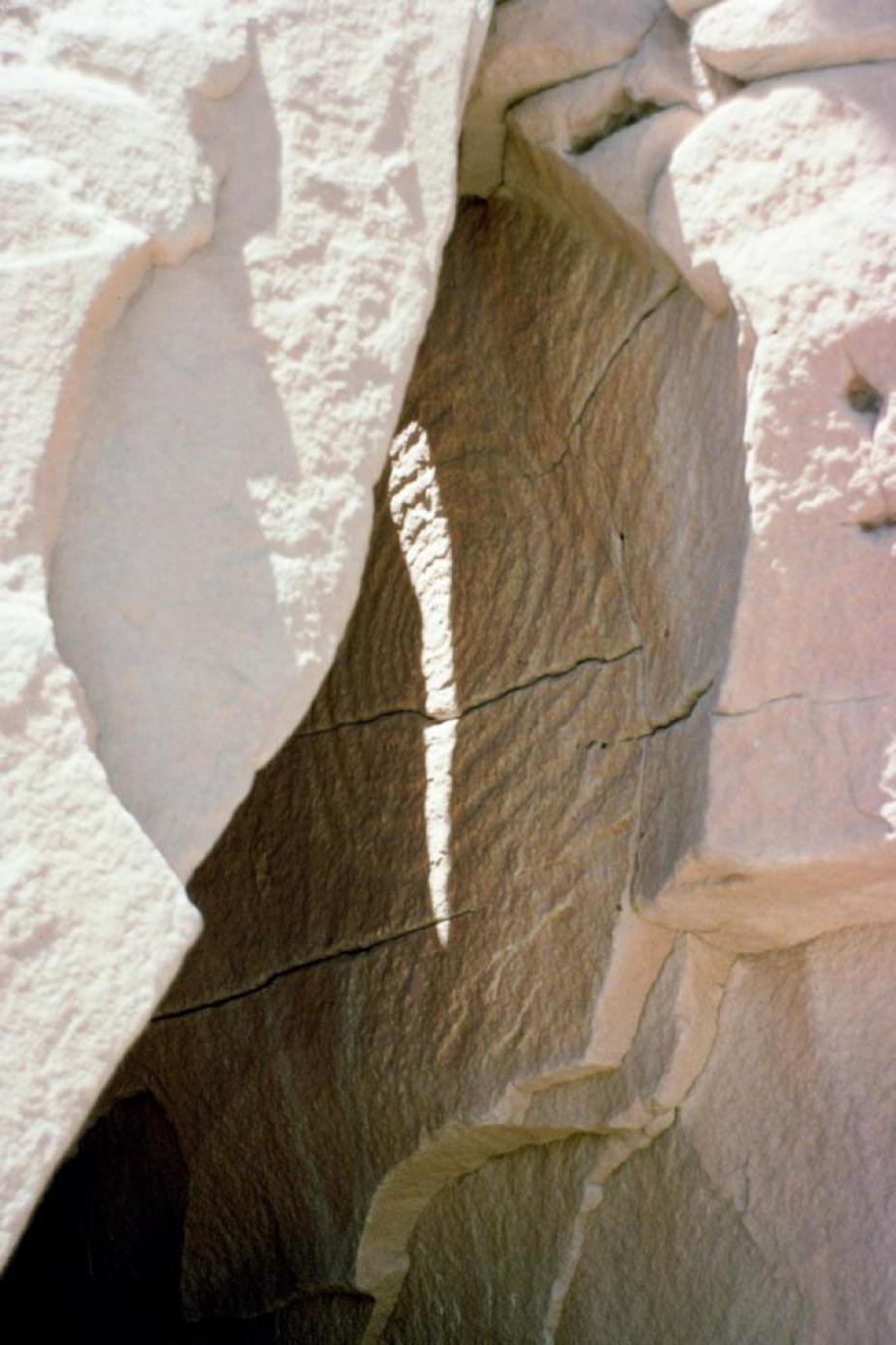The Sun Dagger
The 2-3 meter sandstone slabs, at Fajada Butte in Chaco Canyon, cast shadows of the late morning and midday sun to indicate both solstices and equinoxes.The first, clearly visible on this photograph, is a large spiral, 34 cm high and 41 cm wide. The spiral numbers nine and a half turns, moving outwards and counterclockwise from its center. The second, much smaller petroglyph is a coiled snake form, located higher and to the left of the large spiral, and is hidden from view here.

The "Sun Dagger" light configuration at summer solstice.
Paul Charbonneau, © High Altitude Observatory, National Center for Atmospheric Research
At the summer solstice, before midday, the shafts of light illuminating the cliff face interact with the large spiral in a visually striking manner. Shortly past 11:00am local solar time, a small spot of sunlight first appears above the large spiral. It lengthens vertically into a very narrow, downward pointing elongated triangle (or "dagger"). The dagger continues growing and moving downward until, around 11:15am, it cleanly bisects the spiral almost over its entire height. At this point the Sun is high enough in the sky for the overhang above site to begin casting a shadow on the slabs, and in doing so cuts off the upper end of the dagger. This leads to the dagger as a whole moving downwards while maintaining approximately the same length, until it slips off the cliff face and disappears completely. The whole event lasts a little over 20 minutes. On the winter solstice a = similar sequence of events unfolds, except that this time two light shafts illuminate the cliff face. Once again the shafts start off as small light spots above the spiral, and subsequently stretch downward until they bracket the large spiral. At the equinoxes a long, thin shaft of light illuminates the large spiral off center, but a second, smaller shaft bisects the coil on the smaller snake petroglyph.
Recall from slide 4, Horizon Calendars, that shortly before local solar noon the Sun is moving almost horizontally across the sky. To produce a downward moving light pattern then requires the interaction of two inclined or curved surfaces. Here the needed surfaces are situated near the top of the slabs. It has been suggested that those critical surfaces were further shaped by the Anasazi, but the faint pecking marks noted as supporting evidence for this hypothesis are effectively impossible to distinguish from naturally occurring sandstone weathering patterns.
In 1982 the National Park Service restricted public access to the site, for fear of accelerating erosion and soil loss around the slabs caused by increased visitor volume. Those fears were unfortunately well-founded. In 1989 it was noted that the summer solstice light pattern was altered, due to slight shifting of two of the sandstone slabs. The Sun dagger, as seen on this slide, is now considerably thicker than it was when first studied in the late 1970s. In addition, rather than moving vertically downward, the dagger now forms slightly left of a vertical line bisecting the spiral, and drifts towards center as it moves downward. Subsequent observations revealed that the winter solstice and equinox patterns were severely altered, as compared to the patterns recorded when the site was first studied. A retaining wall was built around the base of the slabs to prevent further erosion and slab movement, and at this writing access to the site is only allowed for yearly site monitoring.